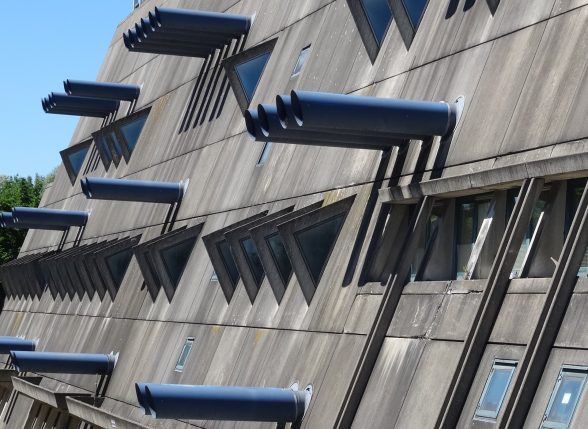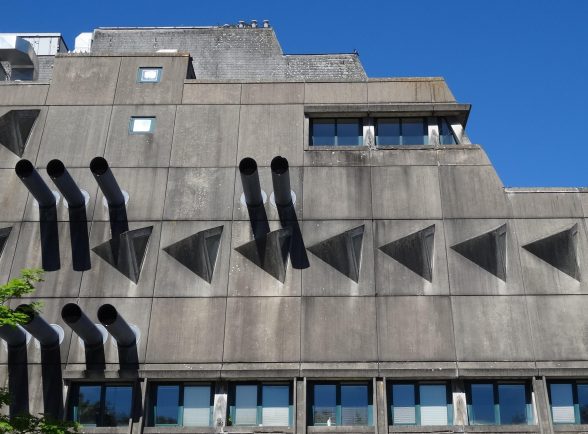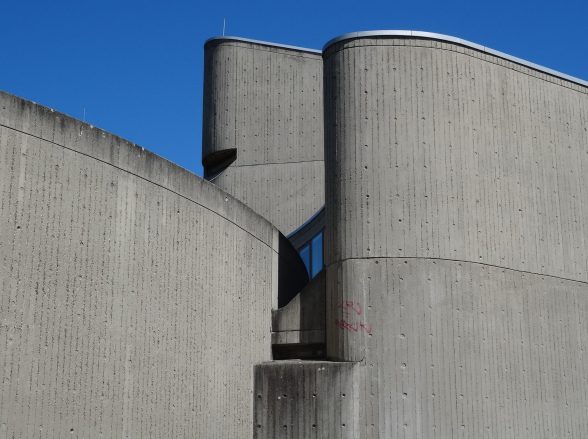This website uses cookies
This website uses cookies to enable it to function properly and to analyse how the website is used. Please click 'Close' to accept and continue using the website.



© Thaddeus Zupančič
I’ve just signed a petition calling for the preservation of two outstanding buildings on a post-war university medical campus in Berlin. Both the “Mäusebunker” (1971–80) by Gerd and Magdalena Hänska, and the former Institute for Hygiene and Microbiology (1966–74) by Fehling+Gogel, are threatened with demolition. If you agree that they deserve to be saved, please sign the petition too.
And yes “Mäusebunker” does translate as “mouse-bunker” – it was originally animal research laboratories and is now the Research Facility for Experimental Medicine. That catchy nick-name manages to be both cute and sinister, and the building looks like a fantasy set for a Tom and Jerry film come to life. No wonder it’s become (as the petition organisers point out) “one of the most photographed darlings of Berlin’s concrete architecture”. Its canted form resembles the late-lamented Pimlico School: both have been compared to battleships, and this one looks as if it has broken free and is going on the rampage. Right now it has all the energy and chutzpah I want to see in a medical research building, but apparently it’s no longer needed as such. Its projecting blue tubes and pyramidal windows, may have practical rationales—to supply fresh and indirect daylight respectively, but surely more even than our own South Bank Centre they are joyful and flamboyant celebrations of new technologies’ ability to control environmental conditions inside, and to allow bold new building forms.

© Thaddeus Zupančič
The “Mäusebunker” has stood empty since 2010, and asbestos contamination has been cited as one reason why it should be demolished. However, asbestos issues have been overcome elsewhere, and, if its outlived its original use, it could certainly be refurbished and redeployed for an alternative purpose—there are several studies which explore the options.
Institute for Hygiene and Microbiology is a less strident building, with expressive curved concrete forms and is described as “a true time capsule of its era” with very little interior alteration. It’s certainly adaptable too. And of course both buildings represent a huge amount of embodied energy—the environmental consequences of demolition alone should be sufficient justification for retention.

© Thaddeus Zupančič

© Thaddeus Zupančič
Our photographs were all taken by Thaddeus Zupančič (who runs our Instagram account). He was in Berlin in 2017 and recorded not only their sculptural virtuosity, but their extraordinarily good physical condition (confirmed by more recent shots on the petition page)—I can’t see any exposed rebar. Hopefully before too long we will be able to visit Berlin once again, and both buildings will have bright new futures.

Become a C20 member today and help save our modern design heritage.
The Mäusebunker is one of the finest examples of brutalist architecture in Berlin, and one of the most quirky and distinctive buildings of its kind anywhere in the world. Gerd Hänska was one of Berlin’s most notable architects, and it works be a shame if his home city were to destroy such a notable example of his work.
The neighbouring Institute for Hygiene and Microbiology is also a constitution of notable architectural interest, and both buildings should be saved for future generations to use and enjoy with as little damage to the original features as possible.